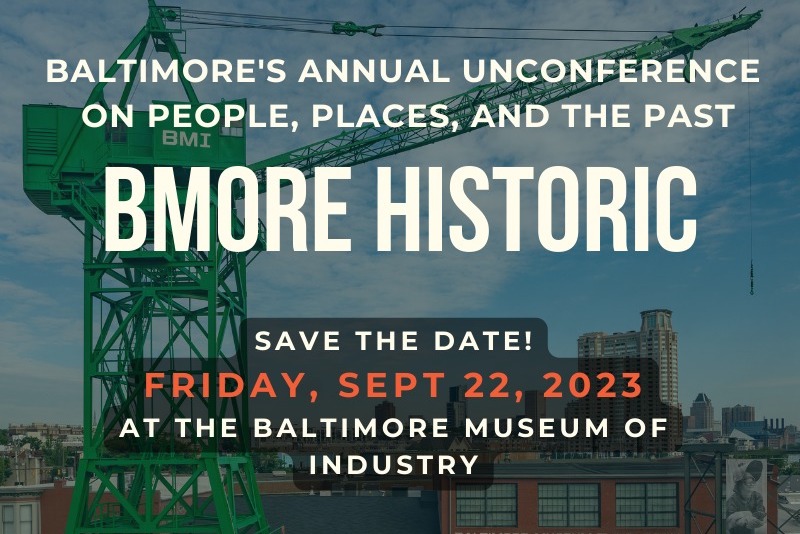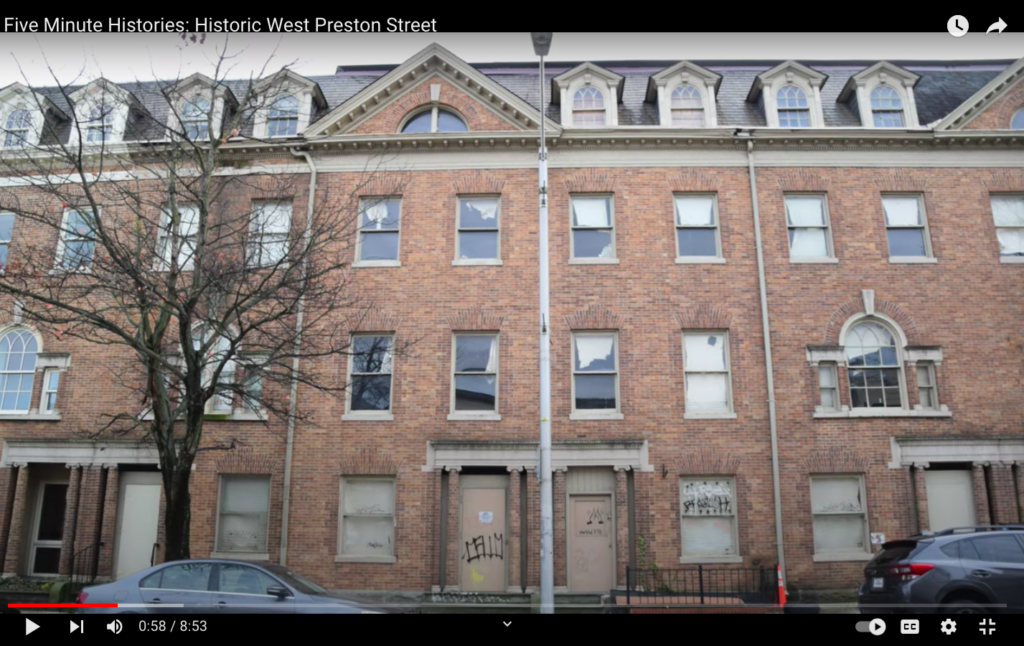
Category: History


Call for Microgrant Applications & Preservation Award Nominations
Do you have a good idea to help preserve Baltimore’s heritage and revitalize our historic neighborhoods? Do you know a great Bmore preservation/history project, organization, or person that needs to be recognized for their hard work?
At our 2023 Preservation Celebration on October 19, we will be giving out four micro-grants to help launch preservation work in the city. We will also be honoring people and organizations that have been doing great work for our city’s historic places and communities.
Apply for a microgrant here: https://forms.gle/kNWmmGDrYMkhZdo86
To submit an award suggestion, email us at info@baltimoreheritage.org!

Save the Date! Bmore Historic 2023 is September 22
Baltimore’s annual unconference on people, places, and the past will be at the Baltimore Museum of Industry on Friday, September 22, 2023! Students are free this year.
What is Bmore Historic?
Bmore Historic is a participant-led unconference for people who care about public history and historic preservation in and around Baltimore. Learn more about Bmore Historic or read our introduction to unconferences.
What do we do at Bmore Historic?
Past, in-person unconferences have been structured around four session blocks: two in the morning and two in the afternoon. We usually have between four to six sessions in each of the time blocks for a total of twenty sessions throughout the day.

The Historic West Preston Street Rowhouses: Our Newest Five Minute Histories Video
Today’s Five Minute Histories video is a bit different! The historic block we are featuring on West Preston Street in Mount Vernon showcases one of the city’s grandest Victorian buildings, the Greek Orthodox Cathedral of the Annunciation, as well as Baltimore’s very earliest switch away from Victorian architecture to a new NeoColonial style. This block was also the home of three pioneering women of science in the early 20th Century, as well as Baltimore’s mayor during the great 1904 Fire. The Greek Cathedral has begun seeking authorization to demolish five of the historic rowhouses on the block and we are sharing this video in hopes that it will help convey why we think this block and these particular rowhouses are important and should be reused rather than demolished. Watch the video here:
This is our series called “Five Minute Histories.” We record short videos about different historic places all over Baltimore and post them on our Facebook page, YouTube channel, and website.

Funding to Restore the Mitchell Law Office in Upton
The Mitchell Law Office in Upton is set to receive $1.75 million from Congressman Kweisi Mfume. This money will be used to transform the building, which was once the office of Maryland’s first Black woman lawyer, Juanita Jackson Mitchell, into a legal hub in West Baltimore. Rev. Al Hathaway of Beloved Community Services Corporation is spearheading this alongside his other project, the PS 103/Thurgood Marshall School restoration. Here is a link to a Baltimore Banner article that ran yesterday.

